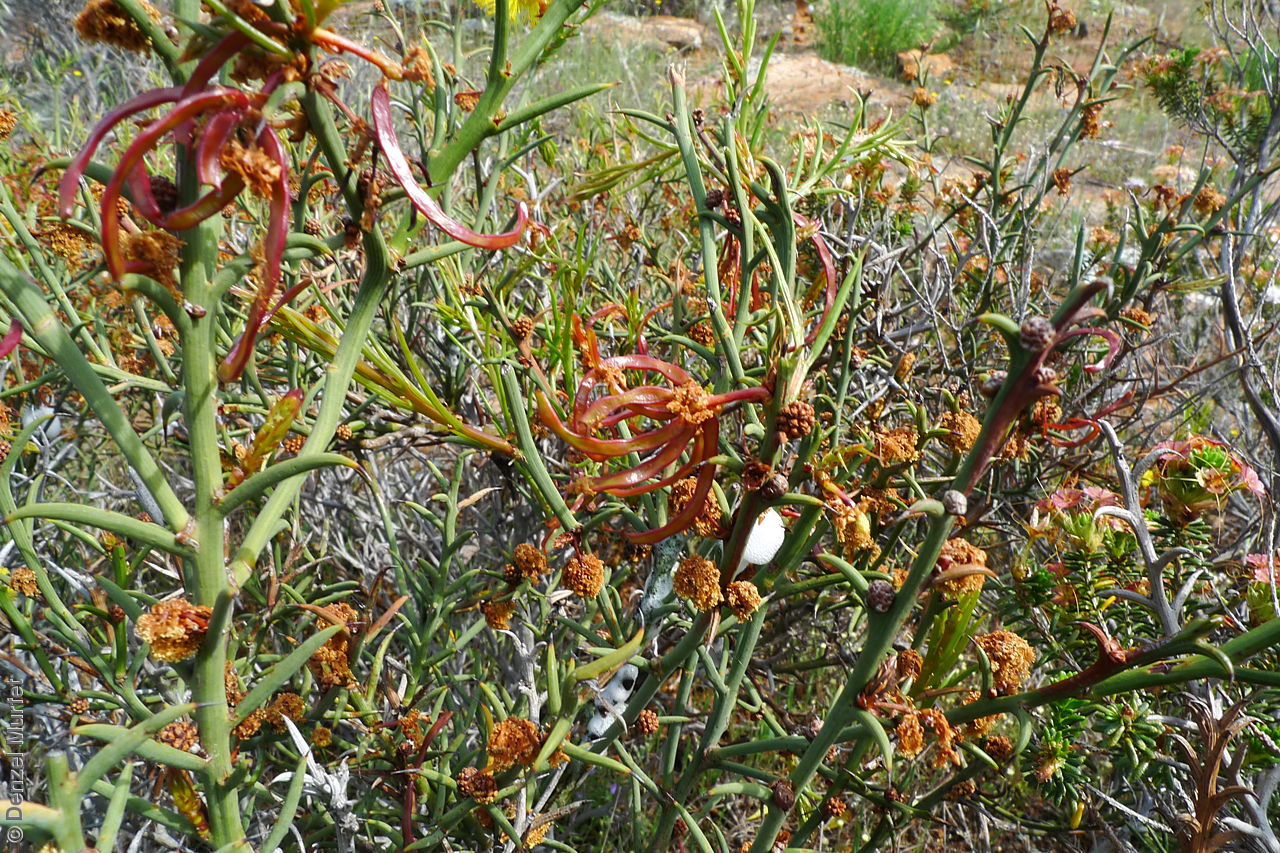











Botanical art
Etymology
Acacia from the Greek 'akakia' and derived from 'ake' or 'akis' meaning a sharp point or thorn and 'akazo' meaning to sharpen. Dioscorides, the Greek physician and botanist used the word in the 1st century AD for the Egyptian thorn tree, Acacia arabica. Continua from the Latin 'continua' meaning uninterrupted, referring to the phyllodes being continuous with the stem.
Distribution and status
Found on Eyre Peninsula and across the Flinders and Mt Lofty Ranges, growing on hard alkaline, calcareous and sandy alkaline soils, in woodland, open scrub and Triodia grassland. Also found in New South Wales. Native. Common in South Australia. Common in New South Wales.
Herbarium regions: Nullarbor, Gairdner-Torrens, Flinders Ranges, Eastern, Eyre Peninsula, Northern Lofty, Murray, Southern Lofty, South Eastern, Green Adelaide
NRM regions: Adelaide and Mount Lofty Ranges, Alinytjara Wilurara, Eyre Peninsula, South Australian Arid Lands, South Australian Murray-Darling Basin, South East
AVH map: SA distribution map (external link)
Plant description
Small, erect or spreading, rigid shrub to 2 m high. Branches rigid, grey-green but becoming brownish on older stems. Leaves continuous with the stem, rigid, terete to 3.5 cm long to 2 mm wide, with 4-8 raised longitudinal veins and tapering to a pungent point. Small gland on margin and often at incurved bend in leaves. Inflorescences simple, 1 or 2 in axil with globular, golden-yellow flower-heads. Flowering between July and October. Fruits are brown, brittle to leathery, slightly wrinkled pods to 8 cm long and 5 mm wide, usually curved to once-coiled, constricted between and raised on alternate sides over seeds. Seeds are hard, dark brown and ovoid to globular to 4 mm long and 3 mm wide. Seed embryo type is investing.
Seed collection and propagation
Collect seeds between November and January. Collect mature pods that are turning brown, with hard, dark seeds inside. Place the pods in a tray and leave to dry for 1-2 weeks or until the pods begin to split. Then rub the dried pods to dislodge the seeds. Use a sieve to separate any unwanted material. Store the seeds with a desiccant such as dried silica beads or dry rice, in an air tight container in a cool and dry place. Seed viability is usuallyhigh. This species has physical dormancy that needs to be overcome for the seed to germinate (e.g. nicking or softening the seed coat).
| Location | No. of seeds (weight grams) | Number of plants | Date collected | Collection number Collection location | Date stored | % Viability | Storage temperature |
|---|---|---|---|---|---|---|---|
| BGA MSB | 3,870 (36 g) 3,600 (33.14 g) | 60 | 5-Dec-2005 | DJD293 Eyre Peninsula | 1-Aug-2006 | 75% | -18°C |
Number of plants: This is the number of plants from which the seeds were collected.
Collection location: The Herbarium of South Australia's region name.
% Viability: Percentage of filled healthy seeds determined by a cut test or x-ray.